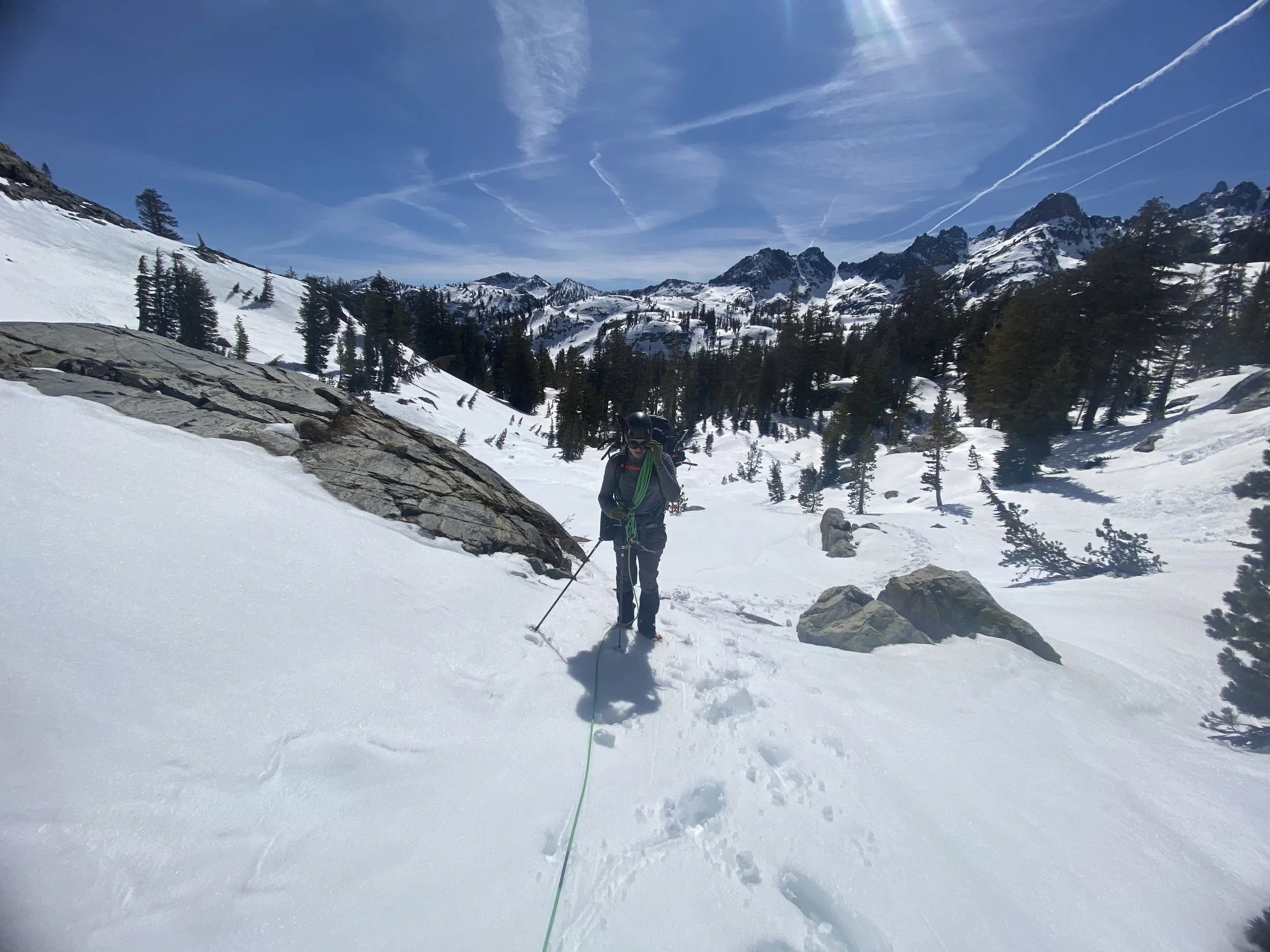Lessons from Navigating in Deep Snow
We attempted a pretty well-known traverse in the Eastern Sierra Nevada, in the Minaret range.
In the summer, this route is marked by a trail. However, following a heavy snowfall, 6 to 8 ft of powder had covered the terrain turning it into an off-trail route.
Snow travel wasn’t a new thing to us. We had summited several high elevation peaks in the western US and in Europe. In a typical high altitude alpine environment, snow usually signify faster travel; Hard snow is typically easier to handle than the rocks and boulders it usually covers.
A typical treeless alpine environment guarantees one more thing: To have visible bearings at almost all times, therefore making navigation fairly simple.
This time around, we weren’t traversing a ridge or a glacier. We were traversing a relatively low elevation valley covered with large and tall trees and with drainage. This didn’t seem like a big deal given our past experiences. The reality turned out to be different.
We found the snow to be extremely soft and unpredictable. Although we were wearing snowshoes, we found ourselves buried waist deep multiple times. Snow bridges had to be inspected individually before making an attempt at crossing. Visibility was poor. The traverse turned out to be quite a workout.
Navigation had to be carefully monitored in order to avoid taking the wrong direction, being stuck and having to reverse course, wasting both precious energy and daylight.
Those conditions made it difficult to catch a regular pace. We had to make frequent stops to check our navigation.
Our fitness was good, our preparation sharp, however constantly trying to find our way consumed a tremendous amount of time and energy.
We had navigated higher, steeper and more technical winter terrain before, and this seemed like it would be easy, but were taken aback by how soft, deep and unsettled snow can become in valleys.
Ultimately, our pace was slower than we had expected we abandoned our objective for safety reasons and returned to our car after three days.
Lesson learned!

